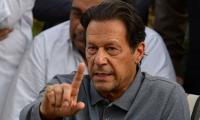I remember a microeconomics class where the professor asked us: “what has a negative price?” As we struggled to answer, the professor said: “garbage! We pay money to get rid of it, making its price negative for us.”
Most state-owned enterprises (SOEs), such as PIA, may have a negative net worth too, based on their earnings potential. However, this doesn’t mean they’re worthless. Upon liquidation (close, sell assets and pay off liabilities) SOEs can generate significant cash, primarily due to their valuable land and buildings.
The operational value of an entity is different from the worth of its assets in liquidation. For example, the entity that operates the steel mills cannot do much with the unused land of the mill. However the prospective buyer, if not made to necessarily operate the mill, can use the land for housing or many other purposes. This changes the worth of the SOE’s land and makes the liquidation value different from its operative value.
The expected negative operational value of many SOEs stems from factors such as non-merit-based hiring, inefficient public-sector work culture, lacking performance-based pay and retention and difficulty in laying off underperforming employees, even with attractive golden handshake packages.
The financial models used to determine the worth of an enterprise based on earning potential cannot easily factor in the kinds of qualitative factors mentioned above. Therefore, these models may yield an unrealistic high potential price of an entity to be privatised.
To sell SOEs successfully, we must, for most SOEs, discard the earnings view and the ‘family-silver’ view in favour of the ‘garbage’ view. A better privatisation approach would then be to assess the market worth of assets of the SOEs in liquidation and try to sell assets based on the said valuation.
What kind of entities are best suited to privatise an SOE or sell its assets? The government? No. The public sector, which has already failed to manage SOEs efficiently, cannot be expected to sell them in a good and transparent manner. Given our history of mega-corruption scandals and the pervasive thana-kutchery culture of corruption, public trust in the integrity of any government, regardless of its political alignment, is alarmingly low. Consequently, any privatisation deal, no matter how transparent, is almost certain to attract allegations of corruption.
The only way to ward off such allegations is by assigning the entire privatisation process to an apolitical entity that the general public trusts with their money. Fortunately, there are charities that enjoy an exceptional level of public trust. If the task of privatisation is entrusted to one of these organisations, or a consortium of them, it is highly unlikely that they would face accusations of corruption, even in transactions involving the liquidation of enterprises or the sale of assets. However, the question remains: would these charities accept such a responsibility, and could they spare the time to undertake it?
One could argue that charities may lack the technical expertise required to accurately assess the value of an enterprise or its assets. However, all these organisations would need to do is hire technically competent and reputable individuals or entities to handle the task. The leadership of these charities, who have built their organisations from the ground up into highly respected institutions, undoubtedly possesses the acumen to recruit the right people for the right jobs. At the very least, they would follow sound procedures to identify and engage entities capable of executing the privatisation or liquidation process efficiently and without attracting allegations of corruption.
It must be understood that honesty must take precedence over expertise. If the priorities are reversed, then despite securing favourable prices informally, only a pittance might make its way into the government’s coffers. Privatisation deals led by the government often contribute little to the national treasury, tarnish the reputation of any government regardless of its political alignment, and fuel conspiracy theories in a country already burdened by them. In a climate where the formation and dissolution of governments are often questioned, imagine the potential misuse of illegal funds generated through such privatisation deals.
Naturally, valuing SOEs based on their assets could necessitate shutting them down and laying off their employees. This would be politically damaging and likely spark public unrest, with employees and opposition groups taking to the streets. However, a combination of incentives and enforcement might address these challenges – offering generous severance packages as a ‘carrot’ and enforcing compliance with the law as a ‘stick’. Testing this approach with one enterprise could provide valuable insights into its viability.
If this strategy fails to gain traction within the government, an alternative approach would be to make public the financial model used to estimate reserve prices and the underlying calculations. Allowing experts to conduct a peer review of these figures would compel both consultants and the government to present a realistic and defensible reserve value.
Out of the bidders that expressed interest in buying PIA, six were pre-qualified but only one actually submitted the bid. What scared off the remaining five? Finding an answer to this will also help us understand the underlying and unwritten dynamics of privatisation. The answer will help us conceive a better approach to privatisation. Did anybody try to find out?
Finally, should we let one or the other province buy PIA – or for that matter any SOE? No. The SOEs are being privatised because the public sector has failed to run these and the provinces are not likely to be any better than the federal government in running SOEs.
We are in the habit of doing conflicting things – we started giving licences for the provincial banks in the early ’90s, right at the time when we were privatising federally owned banks. Now we contemplate allowing provinces to operate airlines while privatising state-owned PIA.
The writer teaches economics in
Islamabad. He tweets/posts @khawajaidrees11 and can be reached at: Idreespide1@gmail.com
Fortunately, after a decade’s struggle with smog, Pakistani Punjab has understood the urgency of climate action
Recent COP29 summit underscored several emerging opportunities in global climate action
Rapid industrialisation of nations blurred once-clear lines between ‘developed’ and ‘developing’
Analysis of registered candidates reveals that many come from 15 districts affected by floods, poverty and poor...
US-Pakistan relations need to steer clear of the global power competition that dominates geopolitical landscape
Right to privacy is fundamental human right, backed by Quran and Hadith, to maintain dignity







